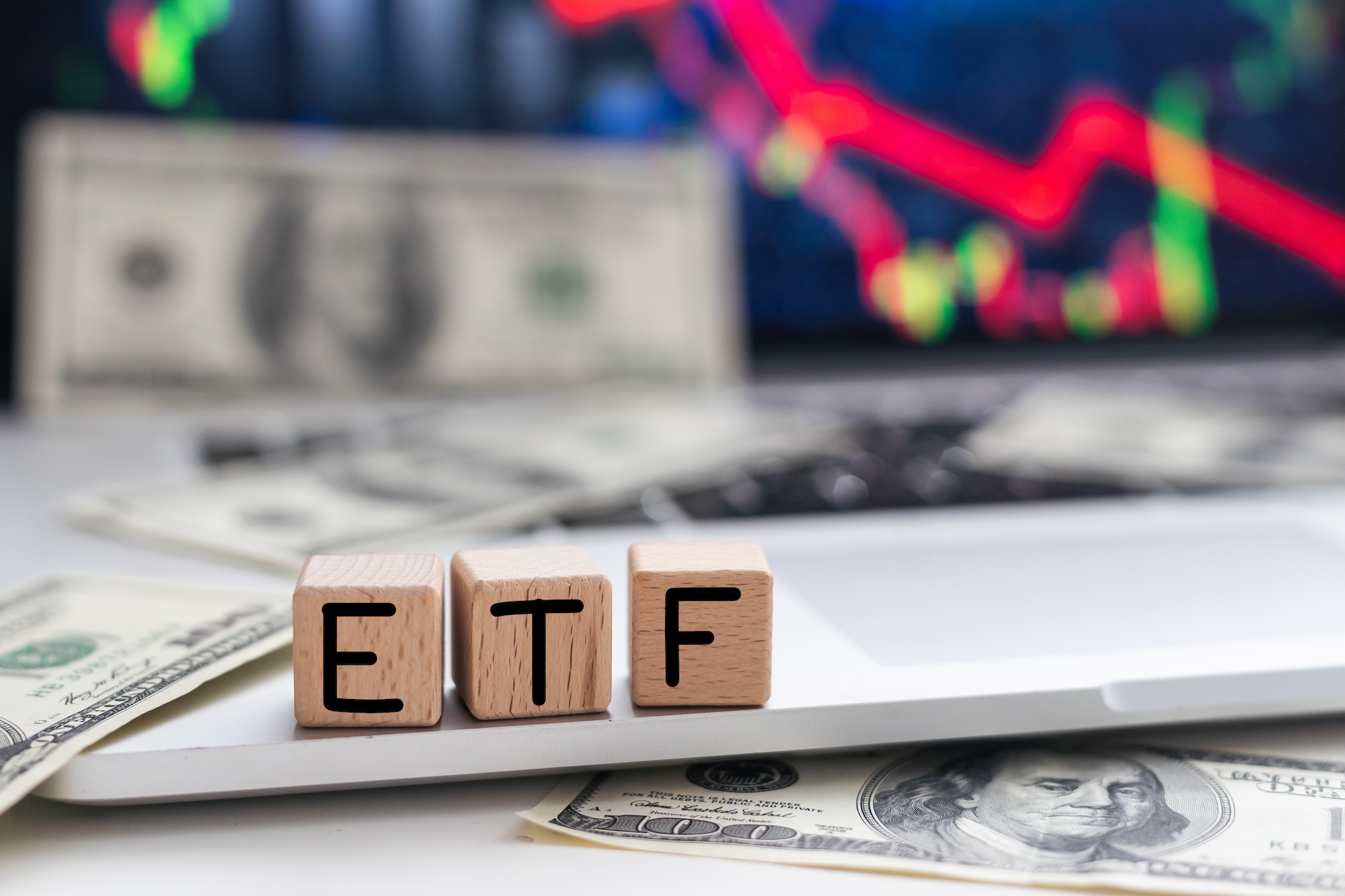With guided wealth portfolios, we aim to provide a diversified portfolio that matches your risk preferences and helps you work toward your unique financial goals.
This is combined with daily account monitoring that auto-rebalances your account when necessary and identifies tax-saving opportunities to not only keep your portfolio in line with its goals, but potentially improve it for greater diversification and future growth.
With Guided Wealth Portfolios, you don’t have to worry about managing or updating your portfolio, as we handle it for you. You get insight into what’s happening in your portfolio through your online portal, and if you ever have any questions about your investment strategy, we’re just a phone call away
Creating The Right Profile For You
All Guided Wealth Portfolios are made up of a mix of low-cost exchange-traded funds (ETFs). An ETF is a type of fund that owns groups of assets like stocks or bonds and is designed to provide portfolio returns in line with a particular index, such as the S&P 500. ETFs can provide you a diversified portfolio and are traded like stocks, making it easier to take advantage of market changes and potential tax-saving opportunities. Your Guided Wealth Portfolio may contain up to 10 ETFs—six equity and four fixed income—each in line with a different index target and invested in U.S. or foreign stocks and bonds.
Building the portfolios
LPL Research, my partner and portfolio manager, created the allocations for Guided Wealth Portfolios using the 10 primary ETFs. The team behind this work includes 50 research professionals, each with an average of 10 years of industry experience, who maintain more than 300 portfolios tailored to specific investment objectives.
The Guided Wealth Portfolios ETF allocations were constructed based on the team’s market outlook for the next 12 to 18 months and are periodically reviewed to determine if shifting is necessary to ensure the allocations remain well diversified.
Guided Wealth Portfolios’ three step process will determine which portfolio is right for you based on your individual goals, investment timeline (if you have one in mind), and feelings about risk in your investments.
1. What's Your Goal?
You’ll choose from three primary goal options:
- Retirement: You want to potentially grow your account for retirement.
- Major purchase: You want to save and invest for a home, car, vacation, etc.
- General investing: You don’t have a specific goal in mind, but you want to start investing for the future.
2. What’s your investment horizon?
If you want to invest for retirement or a major purchase, you’ll be asked to indicate when you’d like to reach your goal. Your investment time frame will be the key factor in determining your initial portfolio allocations for your retirement or major purchase goal.
3. What’s your risk tolerance?
Next, you’ll answer a series of risk tolerance questions to help us understand your investment preferences. We’ll seek to discover if you prefer:
- Taking on more risk, which means you’ll receive more equity exposure in your portfolio.
- Taking on less risk, which means you’ll receive more fixed income exposure in your portfolio.
- A mixed approach, which means you’ll receive a balanced mix of equity and fixed income in your portfolio.
If you’re investing for retirement or a major purchase, time will be the key determining factor in your portfolio allocation. Your risk tolerance will determine the “tilt” to your portfolio—whether you have more equity or more fixed income investments, or a balance of the two. On the other hand, if you’re investing for general purposes, your risk tolerance will be the key determining factor in your portfolio allocation.
Your Portfolio Allocation
There are five primary investment objectives available through Guided Wealth Portfolios:
Income with Capital Preservation
Emphasis is placed on current income and preventing capital loss. This is considered the lowest-risk portfolio available and is generally for investors with the shortest time horizon.
Income with Moderate Growth
Emphasis is placed on current income with some focus on moderate capital growth.
Growth with Income
Emphasis is placed on modest capital growth. Certain assets are included to generate income and reduce overall volatility.
Growth
Emphasis is placed on achieving high long-term growth and capital appreciation. This is considered higher than average risk.
Aggressive Growth
Emphasis is placed on aggressive growth and maximum capital appreciation. This portfolio has a high level of risk and is for investors with a longer time horizon. This portfolio is considered to have the highest level of risk.
Retirement goal
If you’ve decided to invest for retirement, you’ll get a portfolio glidepath, which is essentially an investment roadmap that sets in place your portfolio allocation for today and for each year until retirement. The initial allocation is based primarily on your time until retirement, as, generally, the more time you have until your investment goal, the more aggressive your investments should be. As you get closer to your goal—in this case, retirement—your allocation will become more conservative.
However, your portfolio is also “tilted” slightly, based on your risk preferences. For example, if your answers to the risk tolerance questionnaire indicated you’re more of a conservative investor, your glidepath would fall under the fixed income tilt, shown in the chart on the next page.
By combining your years to retirement (left column) and your risk tolerance (top row), you get your starting allocation. For example, if you have 20 years to retirement and prefer a more aggressive approach (equity tilt), you’d have a growth strategy, and your starting allocation would be 80% equities / 17% fixed income / 3% cash. Your glidepath then gives you your allocation each year as you get closer to retirement. In this example, in the next year—year 19— your allocation would move to 77% equities / 20% fixed income / 3% cash.
It’s important to know that more weight is given to your investment time frame than your risk preferences when you begin investing. For example, you could answer the risk tolerance questions conservatively, but start out with a more aggressive portfolio because you have a long time until retirement. As you get older, however, your risk tolerance will hold greater weight and your portfolio will shift toward a more conservative allocation.
As seen in the chart, your glidepath will fall into one of five investment objectives, which is the primary goal your portfolio is working toward. As you get closer to retirement, your investment objective may change, as you’ll need to have a more conservative objective when you have less time to invest.
Major purchase goal
As with the retirement goal, if you’ve decided to invest for a major purchase, you’ll get a portfolio glidepath, which is essentially an investment roadmap that sets in place your portfolio allocation for today through your goal. The initial allocation is based primarily on the time until your goal, as, generally, the more time you have until your investment goal, the more aggressive your investments should be. As you get closer to your goal, your allocation will become more conservative.
However, your portfolio is also “tilted” slightly, based on your risk preferences. For example, if your answers to the risk tolerance questionnaire indicated you’re a moderate investor, your glidepath would fall under balanced tilt, shown in the following chart.
The starting allocation is determined by combining your years to goal (left column) and risk tolerance tilt (top row).
For example, if you have five years until your goal and prefer a more aggressive approach (equity tilt), you would have a growth with income strategy, and the starting allocation would be 65% equities / 33% fixed income / 2% cash.
The account allocation adjusts as the account moves along the glidepath and you get closer to your goal. In this example, your target allocation would change when you have less than four years to your goal and move to 40% equities / 58% fixed income / 2% cash.
As seen in the chart, your glidepath will fall into one of five investment objectives, which is the primary goal your portfolio is working toward. As you get closer to your goal, your investment objective may change, as you’ll need to have a more conservative objective when you have less time to invest.
General investing goal
If you want to invest for general purposes, you’ll receive a portfolio allocation based on your risk preferences. Unlike the other two Guided Wealth Portfolios goals, the general investing goal isn’t tied to a specific timeline, so you receive a static allocation that remains unchanged throughout the life of your investment (unless rebalancing is needed or your risk tolerance changes).
You’ll be assigned to one of the five Guided Wealth Portfolios investment objectives based on how you answered the risk tolerance questionnaire. Each of these investment objectives corresponds to a portfolio. The breakdown of the portfolios is shown on the righ
Guided Wealth Portfolios (GWP) is a centrally managed investment program sponsored by LPL Financial LLC (LPL). GWP generates investment recommendations based upon model portfolios constructed by LPL. If you are receiving advisory services in GWP from a separately registered investment advisor firm other than LPL, LPL is not an affiliate of such advisor. LPL investment advisors are registered with the U.S. Securities and Exchange Commission, and LPL is also a Member FINRA/SIPC.
All investing involves risk including loss of principal. No strategy assures success or protects against loss. There is no guarantee that a diversified portfolio will enhance overall returns or outperform a non-diversified portfolio. Diversification does not protect against market risk.
An investment in Exchange Traded Funds (ETF), structured as a mutual fund or unit investment trust, involves the risk of losing money and should be considered as part of an overall program, not a complete investment program. An investment in ETFs involves additional risks such as non-diversification, price volatility, competitive industry pressure, international political and economic developments, possible trading halts, and index tracking errors.
References to tax strategies that the GWP service investment management considers in managing accounts should not be confused with tax advice. LPL Financial does not provide tax advice. Clients should consult with their personal tax advisors regarding the tax consequences of investing.





